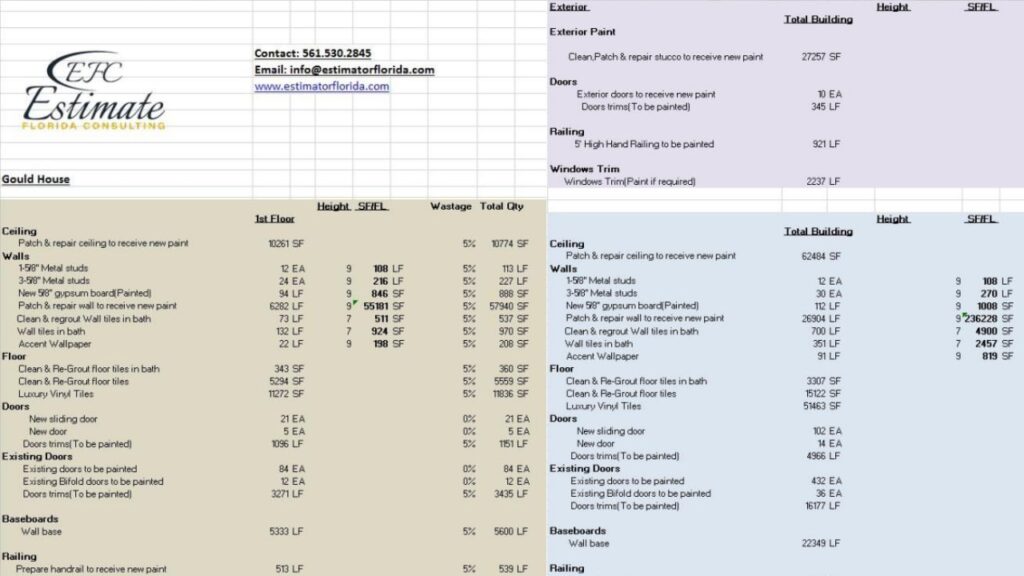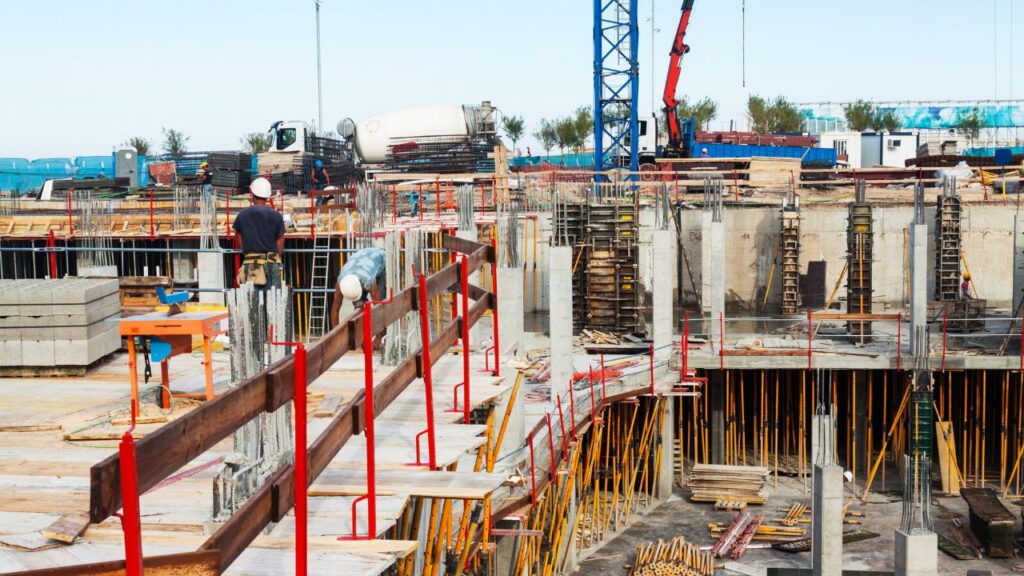A Wining Cost Estimate That Helps You To Win More Construction Projects

Accurate and comprehensive cost estimation is a vital aspect of successful construction projects. Effective cost estimation helps project owners, contractors, and stakeholders make informed decisions, allocate resources efficiently, and manage budgets effectively. In this guide, we will explore the key principles, methods, and best practices for mastering construction cost estimation.
Construction cost estimation involves predicting and quantifying the expenses associated with a construction project. It encompasses various elements, including labor, materials, equipment, permits, overhead costs, and contingencies. A well-executed cost estimation process provides a solid foundation for project planning, budgeting, and financial control.

Accurate cost estimation brings several benefits to construction projects:
Cost estimation forms the basis for budget development and management. A precise estimate helps stakeholders allocate resources appropriately, track expenses, and identify potential cost-saving opportunities. By having a realistic budget, project managers can ensure that financial resources are utilized efficiently and effectively throughout the project lifecycle.
Cost estimation provides crucial information for decision-making processes. Owners and stakeholders rely on cost estimates to evaluate project feasibility, compare different construction methods or materials, and assess the financial viability of a project. Accurate cost estimation allows decision-makers to evaluate trade-offs and make informed choices that align with project objectives.
Cost estimation is an integral part of project planning and scheduling. It helps determine the duration and sequencing of construction activities, procurement schedules, and resource allocation. A detailed cost estimate facilitates effective project planning by providing insights into the timing and availability of resources needed for each phase of the project.
Thorough cost estimation allows for the identification and assessment of potential risks and uncertainties associated with the project. By considering potential cost drivers and contingencies, estimators can help stakeholders develop appropriate risk management strategies and contingencies to mitigate the impact of unforeseen events. Accurate cost estimation enhances project resilience and minimizes the potential for cost overruns.

To master construction cost estimation, it is important to adhere to the following key principles:
A clear and well-defined project scope is essential for accurate cost estimation. The scope should include all relevant components, such as architectural, structural, electrical, mechanical, and civil elements. Thoroughly understanding the project scope helps estimators identify the necessary resources, materials, and labor required for each aspect of the construction project.
Accurate quantity takeoffs involve quantifying and measuring the materials, labor, and equipment required for the project. It requires a detailed understanding of the project plans, specifications, and construction methods. Estimators should carefully analyze the project documentation to ensure that all necessary quantities are included in the cost estimate.

The complexity of a construction project significantly impacts its cost. Estimators should assess the complexity factors, such as site conditions, project location, access constraints, environmental regulations, and unique design requirements. Accounting for project complexity helps estimators identify the additional resources, time, and costs involved, ensuring a more accurate cost estimate.
Estimators must consider current market conditions and cost factors when developing a cost estimate. Fluctuations in material prices, labor rates, and equipment costs can impact the overall project budget. Estimators should conduct thorough research, consult with suppliers and contractors, and monitor market trends to ensure that cost estimates reflect the prevailing market conditions.
Several methods and techniques can be employed for construction cost estimation, including:
Parametric estimating involves using historical data and statistical relationships to estimate costs. This method relies on key project parameters, such as area, volume, or unit quantities, and cost per unit measures. Parametric estimating is particularly useful for early-stage or conceptual estimates.
Analogous estimating involves comparing the current project with similar completed projects. This method relies on historical data and expert judgment to estimate costs based on similarities in scope, size, complexity, and other relevant factors. Analogous estimating is useful when there is limited project-specific data available.
Bottom-up estimating involves estimating costs for each individual component or activity of the project and then aggregating them to determine the total project cost. This method requires detailed analysis, quantity takeoffs, and cost breakdowns. Bottom-up estimating provides a high level of accuracy but can be time-consuming for large and complex projects.
Three-point estimating combines optimistic, pessimistic, and most likely scenarios to estimate costs. This method takes into account uncertainties and risks associated with cost drivers and allows for a probabilistic assessment of the project budget. Three-point estimating provides a range of possible cost outcomes and supports better risk management.
Examining real-world case studies can provide valuable insights into successful cost estimation strategies. Here are a few examples:
Case Study 1: A large-scale commercial construction project implemented detailed quantity takeoff techniques combined with accurate historical data analysis to achieve highly accurate cost estimates. This approach allowed the project team to effectively manage costs and complete the project within budget.
Case Study 2: A residential construction company utilized advanced estimating software with integrated databases to streamline their cost estimation processes. This enabled them to improve accuracy, reduce estimation time, and enhance profitability.
Maximize your construction business’s potential with our competitive financing options

To achieve mastery in construction cost estimation, it is essential to follow these best practices:
Utilize historical data from past projects to establish benchmarks, identify trends, and improve the accuracy of cost estimates. Analyzing historical data helps estimators account for inflation, understand project-specific cost drivers, and validate the reasonableness of the estimate.
Promote collaboration among project stakeholders, including architects, engineers, contractors, and suppliers. Engaging the expertise and knowledge of various stakeholders allows for a more comprehensive understanding of project requirements and potential cost implications. Collaboration also helps in developing accurate estimates and fostering effective communication throughout the project.
Cost estimates should be dynamic and regularly updated throughout the project lifecycle. As the project progresses, estimators should compare the actual costs with the estimated costs, identify any deviations, and make adjustments accordingly. Regular cost updates provide stakeholders with real-time information, enabling proactive decision-making and cost control.
Clearly document all assumptions made during the cost estimation process, along with the associated risks and uncertainties. This documentation provides transparency and allows stakeholders to understand the underlying basis of the cost estimate. Additionally, it helps in conducting sensitivity analyses and contingency planning.
Stay updated with industry trends, new construction methods, and evolving cost factors. Continuous learning and improvement enable estimators to enhance their expertise, adapt to changing market conditions, and incorporate emerging technologies and practices into their cost estimation processes.

The field of construction cost estimation is continuously evolving, driven by technological advancements and industry demands. Here are some future trends to watch for:
Integration of Artificial Intelligence: Artificial intelligence (AI) is increasingly being integrated into cost estimation processes. AI algorithms can analyze vast amounts of data, identify patterns, and make accurate predictions, leading to more precise and efficient cost estimations.
Building Information Modeling (BIM): Building Information Modeling is a digital representation of a construction project, encompassing 3D models, specifications, and other relevant data. BIM technology enables estimators to extract information directly from the model, improving accuracy and collaboration among project stakeholders.
Data Analytics and Predictive Modeling: Data analytics and predictive modeling techniques are gaining prominence in construction cost estimation. By analyzing historical data, industry trends, and project-specific parameters, estimators can develop predictive models that enhance the accuracy of cost estimates.
Mastering construction cost estimation is crucial for the success of construction projects. Accurate cost estimation allows for effective budgeting, competitive bidding, project cost control, and profitability. By considering factors such as material costs, labor costs, equipment costs, and overhead, estimators can provide reliable estimates that support informed decision-making and project success.
Adopting best practices, utilizing advanced estimating software, engaging with industry experts, and addressing the challenges associated with cost estimation are essential steps toward achieving accuracy. Additionally, staying informed about emerging trends like AI integration, BIM, and data analytics can help estimators stay ahead in the evolving landscape of construction cost estimation.
Remember, accurate cost estimation is the cornerstone of successful construction projects, enabling stakeholders to plan, execute, and complete projects with financial confidence and operational excellence.
Regularly updating cost databases is crucial to account for market fluctuations and changes in material and labor prices, ensuring the accuracy of cost estimations.
Contingency allowances account for unforeseen risks and uncertainties in construction projects. Including contingency allowances in cost estimates helps mitigate the impact of unexpected events.
Construction companies should establish a change management process to evaluate and incorporate changes in project scopes. It involves revising cost estimates accordingly and obtaining necessary approvals.
Advanced estimating software automates calculations, integrates with cost databases, and improves efficiency. It reduces errors, saves time, and enhances the accuracy of cost estimations.
Artificial intelligence can analyze vast amounts of data, identify patterns, and make accurate predictions. Integrating AI into cost estimation processes can result in more precise and efficient estimations.
Here I am going to share some steps to get your construction cost estimate report.
You can send us your plan on info@estimatorflorida.com
Before starting your project, we send you a quote for your service. That quote will have detailed information about your project. Here you will get information about the size, difficulty, complexity and bid date when determining pricing.
We do construction cost estimating and prepare a detailed report for your project. At last you finalize the report and finish the project.
561-530-2845
info@estimatorflorida.com
Address
5245 Wiles Rd Apt 3-102 St. Pete Beach, FL 33073 United States
561-530-2845
info@estimatorflorida.com
Address
5245 Wiles Rd Apt 3-102 St. Pete Beach, FL 33073 United States
All copyright © Reserved | Designed By V Marketing Media | Disclaimer
IMPORTANT: Make sure the email and cell phone number you enter are correct. We will email and text you a link to get started.
By clicking “I Agree” above you give Estimate Florida Consultin express written consent to deliver or cause to be delivered calls and messages to you by email, telephone, pre-recorded message, autodialer, and text. Message and data rates may apply. You are able to opt-out at any time. You can text STOP to cancel future text messages.